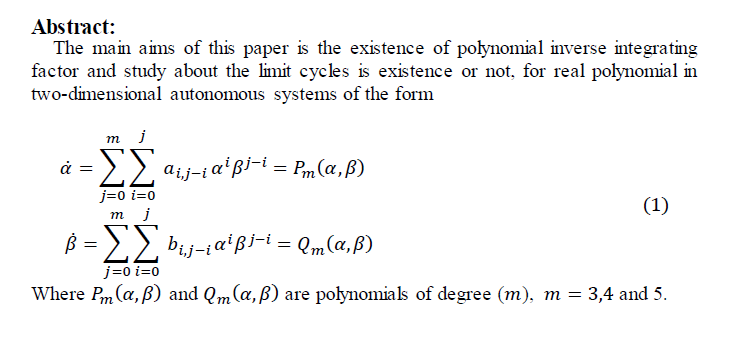In this study, novel Schiff base complexes with Zn(II) and Co(II) ions were successfully synthesized. The malonic acid dihydrazide was converted into the Schiff base ligand by combining it with 1-hydroxy-2-naphthaldehyde, and the last step required reacting it with the appropriate metal(II) chloride to produce pure target complexes. The generated complexes were thoroughly characterized using FTIR, 1H-NMR, 13C-NMR, GC-mass, and UV-Vis spectroscopies. In order to photo-stabilize polystyrene (PS) and reduce the photodegradation of its polymeric chains, these chemicals have been used in this work. The efficiency of the generated complexes as photo-stabilizers was evaluated using a variety of techniques, including FTIR, weight loss, visc
... Show MoreAbstract: This study aims to investigate the backscattering electron coefficient for SixGe1-x/Si heterostructure sample as a function of primary electron beam energy (0.25-20 keV) and Ge concentration in the alloy. The results obtained have several characteristics that are as follows: the first one is that the intensity of the backscattered signal above the alloy is mainly related to the average atomic number of the SixGe1-x alloy. The second feature is that the backscattering electron coefficient line scan shows a constant value above each layer at low primary electron energies below 5 keV. However, at 5 keV and above, a peak and a dip appeared on the line scan above Si-Ge alloy and Si, respectively, close to the interfacing line
... Show More (1)
(1)
Re-use of the byproduct wastes resulting from different municipal and industrial activities in the reclamation of contaminated water is real application for green projects and sustainability concepts. In this direction, the synthesis of composite sorbent from the mixing of waterworks and sewage sludge coated with new nanoparticles named “siderite” (WSSS) is the novelty of this study. These particles can be precipitated from the iron(II) nitrate using waterworks sludge as alkaline agent and source of carbonate. Characterization tests using X-ray diffraction (XRD), scanning electron microscopy (SEM) and energy dispersive spectroscopy (EDS) mapping revealed that the coating process was c
 (40)
(40)
 (33)
(33)
Abstract
There has been a heated controversy over the role the financial policy plays and how sufficient it is in affording the financial burden. This burden is known as the operational current expenses which the governments of various countries mainly afford, despite the discrepancy in the government’s economic policy. After the deterioration and deficit in the state budget in all countries nowadays, it was necessary to find an appropri
... Show MoreThe Vogue of the Restoration Comedy of Manners and George Etherage's The Man of Mode; or, Sir Fopling Flutter
Exposing the dorsal superficial skin of rats to partial-depth burn leads to bacterial and microbes Invasion. Topical treatment is required in most superficial burn cases Moist exposed burn ointment (MEBO) protects wounds from infection and enhances healing without any harmful effects of purified chemicals is caused. The topical using of HA gel in rat models with full and partial thickness surgical wounds shows enhancement in wound repair. In this study, we compared the healing efficacy of topical use of hyaluronic acid gel products with MEBO as standard management in rats that were exposed to a partial-thickness burn. The experiment included twenty-four (24) adult albino rats of male sex with weight (150-220 gm) of 3 months’ age divided i
... Show More (7)
(7)
 (1)
(1)
To study the qualitative changes in testis tissue after carbon tetrachloride (CCl4) administration and to determine whether citric acid (CA) has a protective effect against testis damage induced by CCl4. This study compared two types of CA by measuring the histoarchitecture of the testis and serum levels of progesterone, estrogen and testosterone on mice. One of the most produced organic acid is citric acid. In this study, CA produced by microbial fermentation using Aspergillus Niger 5mg/kg and derived from citrus limon 400mg/kg (lemon). Mice were treated with daily intraperitoneal (i.p.) injection for seven successive days after randomly separated into six groups: (1) control, (2) CCl4 (0.02%), (3) limon citric acid (400 mg/kg), (4) CCl4 (
... Show More
